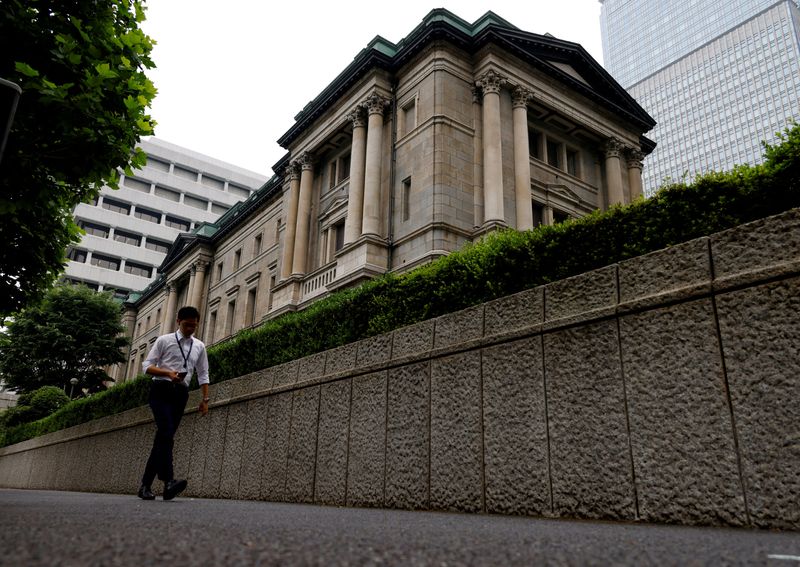Yield on Japan’s benchmark 10-year government bonds has updated new high
2023.01.13 04:52

Yield on Japan’s benchmark 10-year government bonds has updated new high
By Tiffany Smith
Budrigannews.com – On Friday, a wave of emergency bond buying brought the yield on Japan’s benchmark 10-year government bonds back under control after it broke through the new ceiling set by the central bank. This was the market’s most direct challenge yet to decades of extremely loose monetary policy.
Investors ran for the hills as rumors swirled that the Bank of Japan’s policy of yield curve control (YCC) might be changed or even abandoned as soon as next week.
That increased yields on 10-year Japanese government bonds by as much as 4 basis points to 0.54 percent, the highest level since the middle of 2015 and above the BOJ’s recently widened range of -0.5 percent to +0.5 percent, which was established in a shocking decision three weeks ago.
The BOJ was forced to announce two separate rounds of emergency buying totaling approximately 1.8 trillion yen ($13.9 billion) because the stress was evident across the yield curve. Some bond lines are already held by the central bank at between 80 and 90%.
The 10-year yield gradually decreased as a result of this, which helped to restore some sense of calm. At 0900 GMT, it was at 0.51 percent.
J.P. Morgan Securities’ head of Japan rates research, Takafumi Yamawaki, stated, “The attack on BOJ, mainly from foreign investors, continues.”
The BOJ said later that day that it would buy more outright bonds on Monday.
While most central banks worldwide are deep into rate-hiking campaigns, the BOJ is an exception in clinging to stimulus. However, signs of stickier inflation and a possible rise in Japan’s mostly stagnant wages have encouraged some investors.
However, the majority of domestic analysts maintain that no significant change will occur until Haruhiko Kuroda, the current governor of the BOJ and author of Japan’s super-stimulus policy, retires at the end of March.
Naka Matsuzawa, chief Japan macro strategist at Nomura, stated, “I think it’s too early for the BOJ to give up.” The 0.5% yield cap can still be defended with ammunition.
In the week that the central bank increased the band, offshore investors sold record numbers of Japanese government bonds, indicating that the six-year-old YCC policy was coming to an end.
After the Yomiuri newspaper reported on Wednesday that BOJ officials would examine the side effects of YCC at their two-day meeting next Wednesday, a shift appeared more likely.
The markets are speculating that the central bank may reduce its yield target to three- and five-year bonds; however, previous international experience suggests that the strain will continue.
In a painful reversal at the end of 2021, the Reserve Bank of Australia (RBA) was forced to face a similar dilemma when it was forced to abandon its three-year yield target.
The RBA realized that its pledge to maintain three-year yields at 0.1 percent through 2024 was no longer credible in light of the local economy’s faster-than-expected recovery and rising inflation.
As a result, it abruptly ended the whole thing, causing three-year yields to soar to 0.48 percent. The RBA acknowledged that this episode caused “reputational damage” that would not happen again.
Given that data this week showed that inflation in Tokyo, a leading indicator of trends across the nation, unexpectedly rose at a rate twice the target of 2%, the similarities are striking.
At the same time, Fast Retailing, which owns Uniqlo stores and focuses primarily on Japan, announced that it would increase wages by as much as 40%, offering hope that salaries might finally begin to catch up to inflation.
Therefore, the challenge for policymakers will be to devise a means of exiting YCC without significantly harming markets.
According to Amir Anvarzadeh, a market strategist at Asymmetric Advisors, “any major selloff could push long-term rates up to one and a half percent in a very short time.” The bond market is extremely illiquid.
“So you can’t just quit this all at once; you have to do it slowly.”
More Rising Inflation in EU reduces hopes for ECB rate cut








